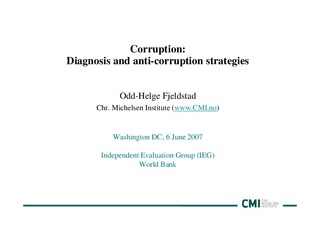| dc.description.abstract | Within the ‘good governance' strategies of the World Bank and the International Monetary Fund initiatives to curb corruption are given priority. Improving governance and reducing corruption are considered essential to helping poor people to escape poverty and countries to achieve the Millennium Development Goals (MDGs). The OECD and the United Nations have also developed separate anti-corruption programmes to assist governments in tackling the problem. Furthermore, several bilateral development agencies have placed anti-corruption efforts high on their development agenda, including DFID, Norad, Sida, and the USAID. Whether this is a desirable change in focus of aid policy, and, whether it is possible to find workable policy instruments to fight corruption, remain to be experienced. This presentation makes no attempt to comprehensively summarize the literature on corruption. Rather, it aims to in a general way to indicate how anti-corruption policies are designed and implemented in developing countries, including their effects and limitations. | |
